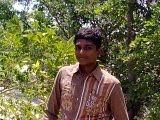The Corps of Engineers is one of the oldest arms of the Indian Army. The origin of the Corps dates back to 1780 when the two regular pioneer companies of the Madras Sappers were raised. Subsequently, the Group of Madras, Bengal and Bombay Sappers were formed and later merged on 18 November 1932 to form the Corps of Engineers in its present form.
The Corps of Engineers consists of three major constituents namely Combat Engineers, MES and Border Roads. The Corps also provides officers to the Military Survey and Defence Research & Development Organisation.
In war, Combat Engineers provide mobility to own forces by constructing bridges, tracks and helipads; on the other hand the Corps denies the same to the enemy by creating obstacles such as laying mine-fields and demolition of bridges.
The Corps of Engineers is replete with acts of bravery and valour. General PS Bhagat of the Corps remains the first Indian Officer to have won the Victoria Cross in the Second World War. Another first in the same war, Subedar Subramaniam was awarded the George Cross. Later, during Kashmir operation soon after Independence, Major R R Rane was awarded the Param Vir Chakra for making a passage through enemy mine fields while crawling in front of a tank.
Engineer units have been deployed abroad as part of UN Missions. They have brought laurels to our country by constructing bridges, opening lines of communication and executing numerous humanitarian tasks.
The Military Engineering Service, which is an important part of the Corps has played a crucial role in Nation Building. It provides MES cover not only to the three Services, namely, Army, Navy and Air Force but also Defence Research & Development Organisation and Ordinance Factories. A number of prestigious and time bound projects have been completed over the years.
The Border Roads Organisation has made its own contribution to the nation by constructing national highways, airfields, buildings and bridges. The Border Roads, by constructing a large number of roads in once inaccessible areas of the Himalayas, Rajasthan and North Eastern States have contributed significantly to their economic development.
True to the motto SARVATRA, the Corps of Engineers has excelled in multifarious activities in war and peace. In peace time the Sappers have always been in the forefront in rendering aid to the civil authorities during natural calamities such as floods and earthquakes. Engineers’ units have also been engaged in the counter insurgency operations in J&K and the North East. The Corps of Engineers has to its credit one Param Vir Chakra, one Ashoka Chakra, one Padma Bhushan, 38 Param Vishisht Seva Medals, two Maha Vir Chakras, 13 Kirti Chakras, three Padma Shris, 88 Ati Vishisht Seva Medals, 25 Vir Chakras, 93 Shaurya Chakras, six Yudh Seva Medals and many other awards.
The Corps of Engineers has maintained its domination in the field of sports and adventure activities. Our boxers, weight lifters and oarsmen have won national acclaim and international representation. The Corps domination in Rowing, Kayaking and Canoeing continues. The Corps Oarsmen have won all the gold medals in the 18th National Rowing Championship. The Corps won a silver medal in junior National Boxing Championship. Our Weight Lifters have won 06 Gold, 02 Silver and 01 Bronze in the National Weight Lifting Championship 1997-98. In the International arena we have won one Silver in the Commonwealth Weight Lifting Championship held at Nauru in March 1998. Subedar Paramjit Sharma of the Corps is the only awardee from the Army to be awarded the Arjuna Award for 1997 in Weight Lifting.
The Yacht Trishna created maritime history after its around the World Cruise in 1985-87. It has thereafter completed two more long voyages from Bombay to Singapore and back in 1994-95 and Bombay to Muscat-Salalah-Mahe and back in 1996-97.
To celebrate 50 years of India’s Independence, the Corps of Engineers had undertaken a multidimensional expedition to the Panchchuli group of peaks in Pithoragarh District, Kumaon during May 1998. The expedition comprised of scientific and environmental research, mountaineering, river rafting, paragliding and skiing.

